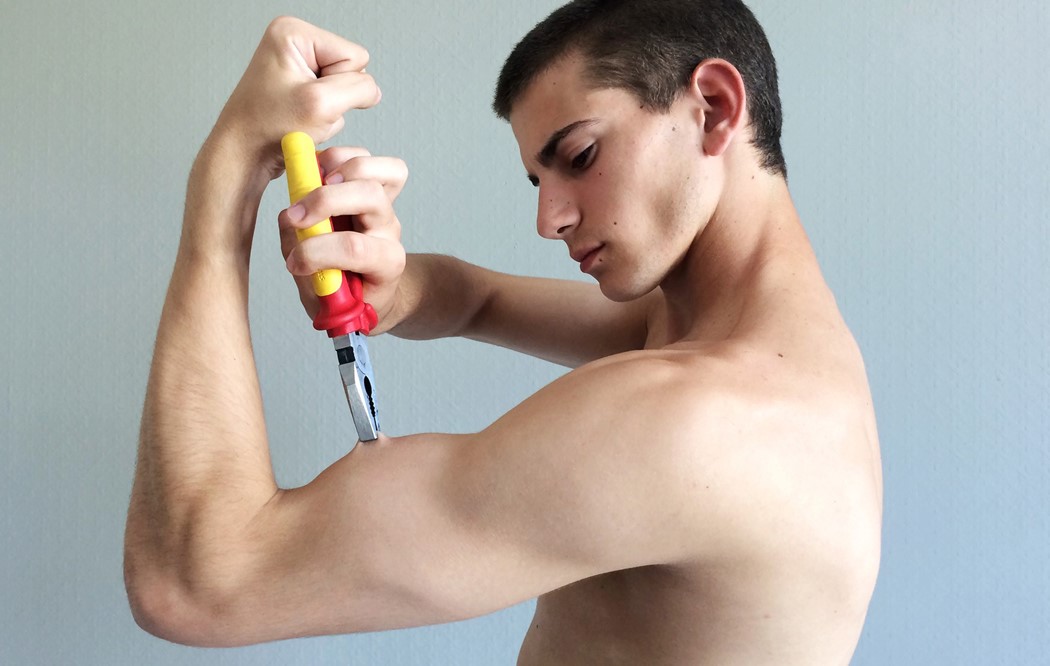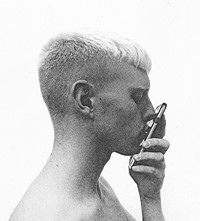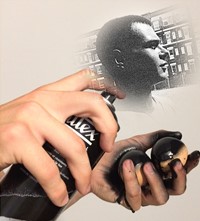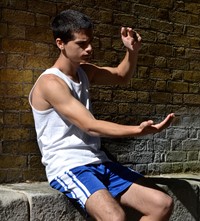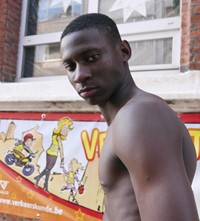Exclusive: Artist Peter De Potter Reveals New Book, VAPE SHOP OLYMPIA
- TextTed Stansfield
From his apartment in Antwerp, the Belgian artist opens up about the meaning and making of his latest publication, and the very reason he does what he does
Antwerp, Belgium. A city steeped in history. A centre of Dutch and Flemish Renaissance painting. The home of Rubens. Where Raf Simons and Martin Margiela studied. Where the fashion collective known as the Antwerp Six met and merged. For a comparatively small city in northern Europe (its population totals just over half a million people), Antwerp’s impact on the worlds of art and high fashion is colossal.
That’s a fitting base, then, for Peter De Potter who, for a relatively underground artist, has had an indelible impact on contemporary visual culture. He’s worked with Raf Simons, providing artwork for his prints, designing and art directing his book Redux, among other things, in a partnership that spanned almost ten years; he’s worked with Kanye West, creating the sleeve art for his 2016 record The Life of Pablo. And that’s not to mention his cult following on the internet: thousands of Tumblr users who like, repost and draw inspiration from his images.
But what makes De Potter so special is not his following, or high-profile collaborators – it’s the completeness and totality of his visual language. It’s instantly recognisable and yet impossible to categorise. It’s multi-layered, incorporating his own photography, graphic design work, collaging and art direction. It commands your attention but invites a second look; is easy to penetrate but tricky to pinpoint; is graphic but emotive, and more than a little bit sensual.
Today, De Potter is standing over a table in the living room of his third-floor apartment in the south of Antwerp. He’s examining proofs of his new book VAPE SHOP OLYMPIA, which has just gone to print. “It’s very fresh, box fresh. It’s like opening a box of sneakers,” he says. (He is wearing a pair of trainers himself.) “My previous books were more intimate and romantic, but this is much fresher,” he continues. “Cleaner colours, cleaner lines and sharper.”
Released on October 6, VAPE SHOP OLYMPIA is the third book De Potter has released in as many years, and represents the final part of this trilogy. While his first publication, The Vanity of Certain Flowers (2016) was about “retreating and contemplation”, his second, All Statues Sing Protest Songs (2017), was about “building up and regenerating”. This one, which is published by Claire de Rouen and previewed in the A/W18 issue of Another Man, is different.

De Potter says he has been thinking about hip hop, social media and the new ways we communicate with one another, particularly the new visual language we’re all using: the emoji. Unlike The Vanity of Certain Flowers and All Statues Sing Protest Songs, VAPE SHOP OLYMPIA is about the now; it’s hopeful and outward-looking. “That this last book is about an optimistic, productive relationship between the self and the world, is so brilliant,” says Lucy Kumara Moore, Director of Claire de Rouen. “Because personally I am very interested in the beauty of spirit and intentionality that can emerge in times of flux or social unease.”
VAPE SHOP OLYMPIA is different from its predecessors in other ways too: the artist has placed more of an emphasis on the graphic design side of his work, employing geometric shapes, logo-like motifs and collages throughout the publication. He has collaborated with other image-makers for the first time as well, working with Italian drawing artist Giovanni Wetzl and Belgian digital design artist Sven Bauweraerts, both of whom he met over Instagram. In fact, De Potter also cast his models on Instagram, having extended an open casting via his own account. “This time round, it just felt right to actually start asking people,” he explains of this decision. “It felt OK to see what the response would be if I were to give a call-out, and it was really interesting. I was actually really surprised how many people actually responded to that.”
De Potter was also surprised by the age of the boys that responded: most were 16 or 17 years old, he says – a generation he didn’t know was aware of his work. And while he says that his models are “athletic”, he insists that their looks weren’t the only factor that he considered during the casting process. “Everybody was selected on personality,” he says. “I know it sounds cheesy and like it’s not true, because they all look good. But it’s true, it’s by talking to them. It’s almost impossible for me to say what kind of quality made me say yes or no.”
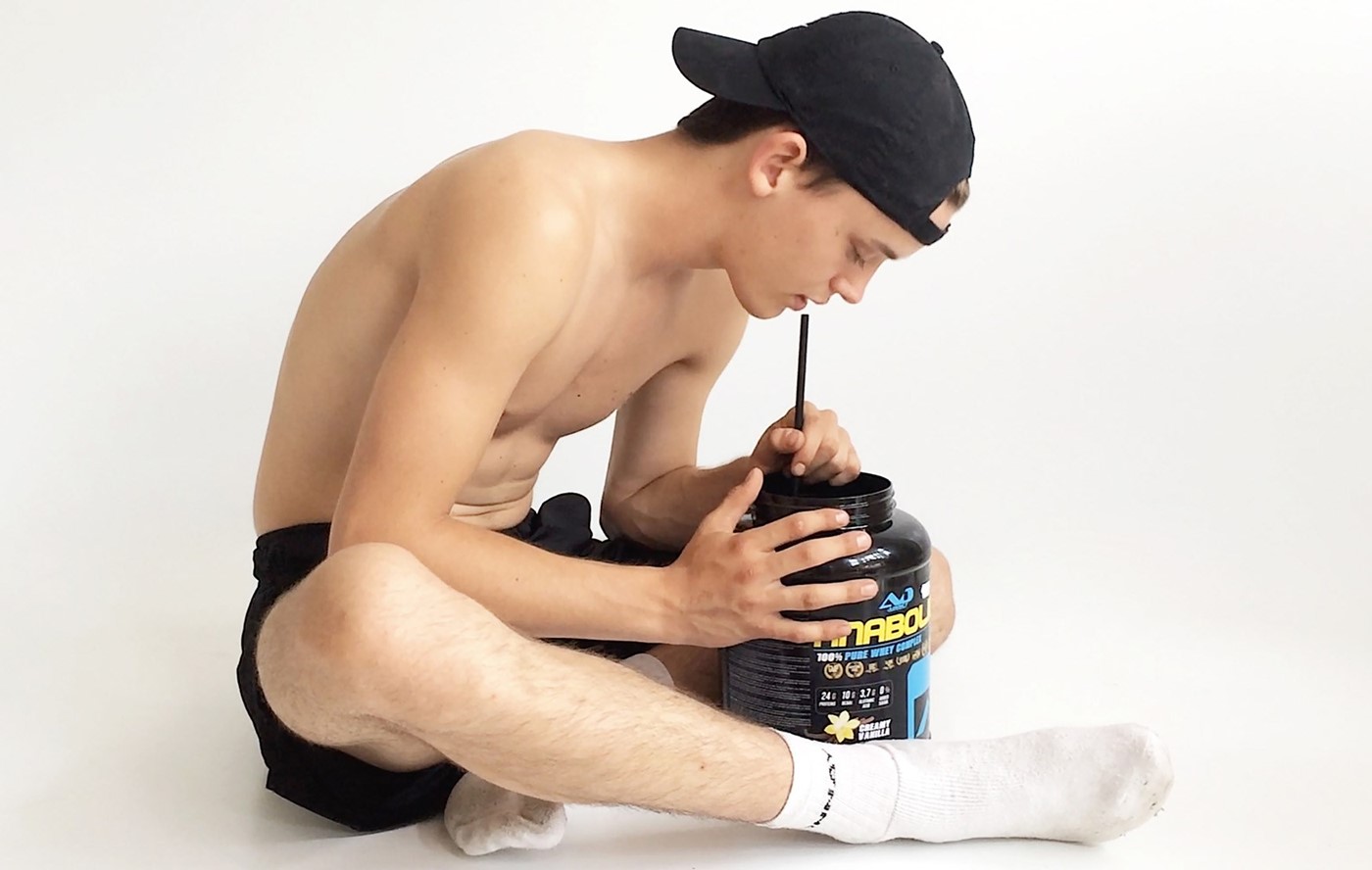
In VAPE SHOP OLYMPIA, as in much of his work, De Potter’s models are laid, quite literally, bare: they are pictured naked, posing, poking their stomachs, pointing at the sky and pulling at their skin with pliers. And yet the artist insists that these images aren’t erotic; that his models’ bodies aren’t sexualised. “For me nudity is someone without clothes. I remove the clothes to have less references,” he says, accepting that his words might come across as naive. “Clothes always reference something, whereas the body is actually quite referenceless. It’s actually a funny thing because it is the blankest canvas you can have, and at the same time is quite… loaded.”
When his models are dressed, they are done so minimally – in a pair of Adidas shorts or track pants; a plain white T-shirt or vest; or trainers. Trainers, he likes, not because of anything to do with sneaker fetishes, but because of the way they signify the time. More than anything else we can put on our bodies, he says.
The fact that De Potter downplays the eroticism in his work so much surprises me. I have often wondered whether he sees his work within the context of representations of nudity through art history: from antiquity to the Renaissance to 20th-century image-makers like Tom of Finland or Robert Mapplethorpe, who have each represented the male body in different and varying ways, often specific to the time and culture they’re working in. But he doesn’t. Neither Laaksonen nor Mapplethorpe have any bearing on his practice – in fact, when pressed for his artistic inspirations, he cites the Flemish painter and graphic artist Frans Masereel, whose work is devoid of any portrayals of the male nude. “I love woodcuts. But he was also a very strong activist, very political, very politically engaged,” he says, flicking through a weighty tome of his work. “I mean I’m looking at [that image] upside down and it’s an old picture but I feel it’s still talking loudly, I love that about it.”
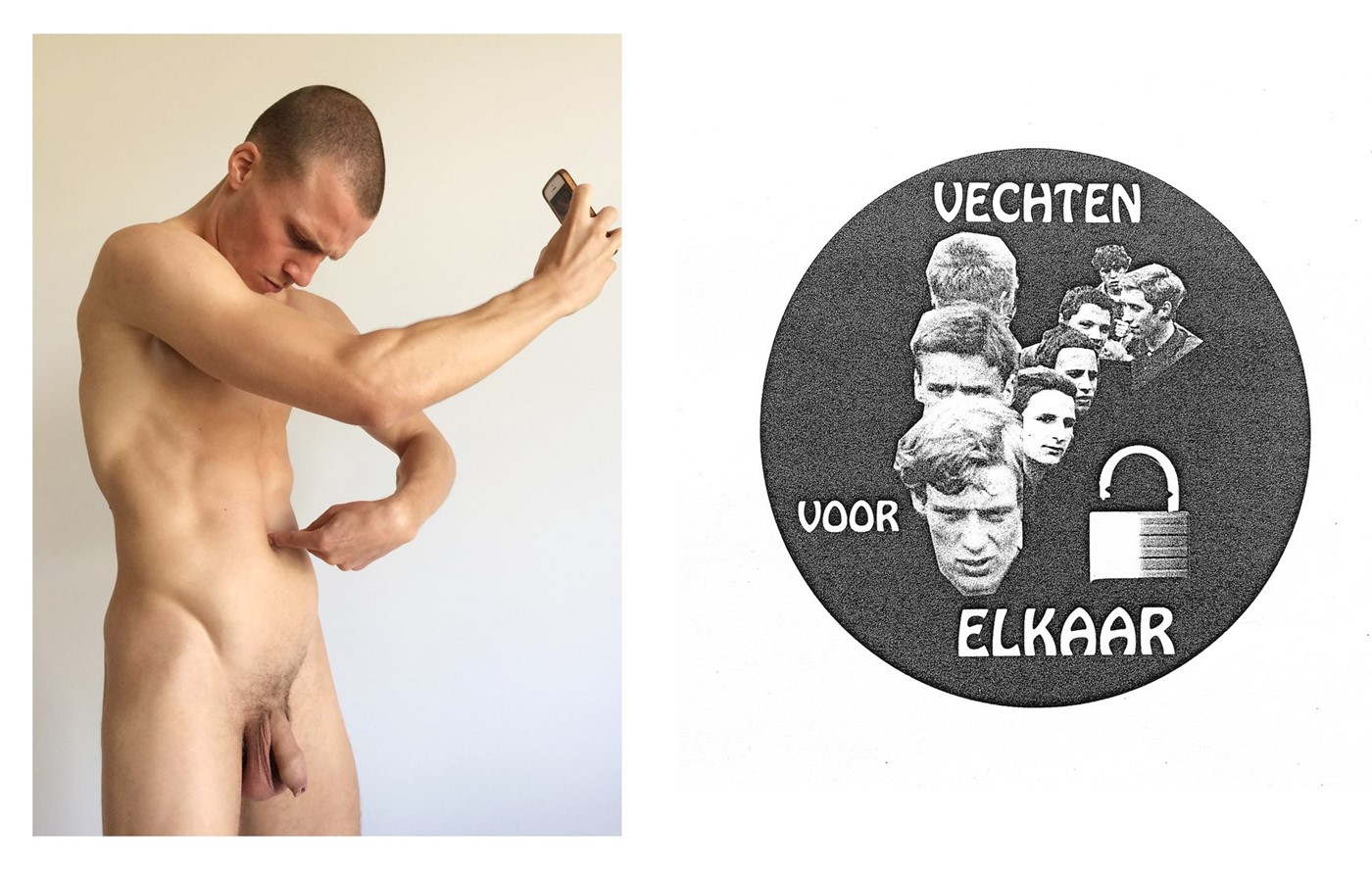
And it’s here that we arrive at De Potter’s own raison d’être, with VAPE SHOP OLYMPIA and his work at large: he wants to create images that talk, work that communicates – a point he clarifies, somewhat poetically, shortly after over email:
“What I’m trying to get across is that the whole of my work is the act of me speaking (we talked about other artists that ‘speak’) rather than a series of subjects being addressed.
I think that in general there is too much focus on the subject matter of artists – you know, the train of thought that when an artist paints flowers, he must have a great love for flowers, naff example but you know what I mean.
In that sense my visual language has all the characteristics of language itself: it’s always a mix of the factual, the emotional and the personal, it takes detours and mutates, it comes whispering or shouting – it’s a living and above all instinctive thing.
All elements I put in my work are interconnected, one can’t go without the other.
As I told you, I’m not doing autobiography or documentary but I always try to reach a spiritual level, one that (here we go) ‘speaks’ to the heart as well as the mind.
Which is why I refer so often to the symbolic quality of certain elements or aspects.
In this way, the nudity is really an expression of a state of mind, much more than it is the depiction of a body.
That state of mind almost always is solitude – but comfort or ease at the same time. I think that most of my nudes are the loneliest images in my work to be honest. But very important: never bleak, never defeated! There’s always power, always resilience.”
What De Potter is also clear about is the role of the viewer in his work: he wants to involve us; he wants us to look at his images and have an experience, both visual and emotional, and he is open to how we might perceive them. So what do you think?
VAPE SHOP OLYMPIA, published by Claire de Rouen, is out October 6. Pre-order a copy here.
